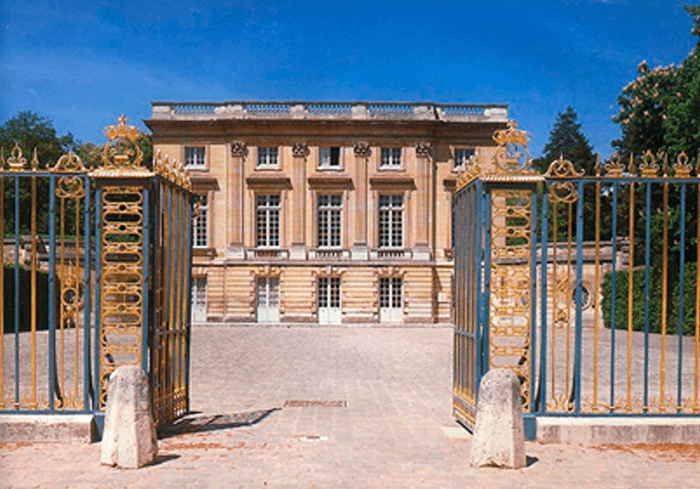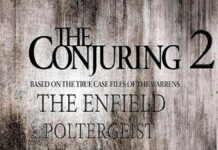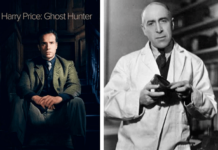
THE VERSAILLES ‘ADVENTURE’
A new BBC television series is Versailles, a docu-drama set in the opulent court and palace of the Sun King Louis XIV built the 17th century. For those interested in ghost experiences and psychical research, Versailles will be known also as the scene of the classic ‘Versailles Adventure’, debated for over a century as a possible time-slip experience.
The two witnesses, Miss Moberly and Miss Jourdain were early women academics occupying important positions in higher education in England. From 1886, Miss Moberly was the first Principal of St Hugh’s College, Oxford, to which post Miss Jourdain succeeded her in 1915. They were highly intelligent and much respected by a wide circle of intellectual friends. However, they risked their reputations both at the time, and posthumously, after publishing a remarkable book on a strange time-slip experience near the Palace of Versailles. Published in 1911 under the title ‘An Adventure’ it has been a source of controversy ever since.
In August 1901 the two ladies took a trip to Paris and visited the gardens of Versailles. Both underwent a series of strange encounters on the afternoon of 14th August 1901 when they went for a walk in the area around the Petit Trianon.

The Petit Trianon around which Miss Moberly and Miss Jourdain had their 1901 ‘adventure’
For a period of about half an hour it seemed they saw the gardens and features not as they were in the first year of the 20th century, but as though they had stepped back in the time, to approximately 1789. They saw a woman shaking a cloth from a window and an old farmhouse. They encountered some men in 18th century clothes who told them to go away. The atmosphere seemed to change and became menacing. Miss Jourdain saw a woman in doorway and noticed the figure seemed strange and lifeless describing it as a “tableau vivant“, a living picture, like waxworks. Moberly did not observe the cottage, but felt the atmosphere change. She wrote: “Everything suddenly looked unnatural, therefore unpleasant; even the trees seemed to become flat and lifeless, like wood worked in tapestry. There were no effects of light and shade, and no wind stirred the trees.” This kind of impression often seems to be the accompaniment to so-called time slip experiences and some of the stranger entity and apparitional encounters.
The figures they saw seemed to be aware of them, and were visible for far longer periods that typical apparitions (which are generally short lived and vanish with a change of consciousness, for instance when a person looks away and then back). In their later published account the ladies detailed various figures they encountered in their walk. A repulsive looking man stared at them, conveying a sense of hostility. Miss Jourdain noted “The man slowly turned his face, which was marked by smallpox; his complexion was very dark. The expression was evil and yet unseeing, and though I did not feel that he was looking particularly at us, I felt a repugnance to going past him. A man later described as “tall… with large dark eyes, and crisp curling black hair under a large sombrero hat” came up to them, and showed them the way to the Petit Trianon.
After crossing a bridge, they reached the gardens in front of Versailles palace, Miss Moberly noticed a lady sketching on the grass who looked at them. She thought she was a tourist at first, but the dress appeared to be old-fashioned and came to believe that the lady was Marie Antoinette. (research later suggested that the Queen sometimes would play act, dressing up as a peasant in the gardens). In total they saw what they took to be eight different apparitions of historic personages including a running man. Though the figures appeared to be aware of them – unusual for modern apparitions which often seem like recordings – they were rather sinister.
Four months later, on 2 January 1902 Miss Jourdain paid her second visit to the gardens. This convinced her that the building where they had encountered the sitting man was not the Temple de l’Amour, as they had called it, and she had heard some music she could not explain. She transcribed the notes as best she could. Altogether Miss Jourdain seems to have considered herself psychically sensitive; notably whilst their accounts broadly converged, they did not see exactly the same figures (however this is also a characteristic of ordinary events when recounted by different witnesses.
Both ladies set about trying to understand their experiences, embarking upon extensive historical researches were pursued with great ability and perseverance. They initially wrote to the Society for Psychical Research about their experience but their letter was rebuffed with their narratives were returned as not justifying investigation. Undeterred they set about putting together their own account, gathering all their findings and publishing their personal accounts as ‘An Adventure’, initially under pseudonyms. The book was a great success and started a controversy which rumbled on for years, both fascinating and provoking supporters and critics in equal measure. Whilst many psychical researchers were sceptical, the public bought the book and there was widespread acceptance the story; the standing and academic status of the ladies making it seem highly improbable that they could have engaged in a deliberate hoax.
Members of the Society for Psychical Research (which holds no corporate opinions) came to be divided over the story and their book which was duly reviewed the book at some length in the Society’s Proceedings (xxv. 353-60).The author of the review thought their work insufficient and that the case might be explained on the hypothesis that the percipients had subsequently ascribed a psychical significance to various actually existing persons and objects seen by them at Versailles. Others thought it a hallucination but over the years many advanced the view that it was a genuine experience that could not be explained otherwise than as some kind of psychical or spiritual experience. Many people were enchanted by the story, and a boost to its credibility seemed to come with new stories of apparitions encountered by British visitors to Versailles which occurred in 1938, 1949 and 1955. This suggested to some among a new generation of researchers that the case was genuine. During the 1950s, one leading SPR member Guy Lambert (and a great sceptic of many poltergeist and ghost stories) championed the paranormality of the story. Analysing the accounts Lambert argued that historical clues indicated that the two ladies had seen the Petit Trianon in 1774 or 1778 rather than 1789. The wave of interest inspired Jean Cocteau to write an introduction to the French edition of An Adventure and make the film Le Testament De Orphee. More minute dissections of the text and the facts followed. One of the problems is that the detail of the case and the weight and counterweight of complex arguments provides an attraction in itself, as with many other historical enigmas. The book had by this stage become a classic example of an English ghost story, notwithstanding the fact it occurred in France.
Then a new theory emerged that the ladies had mistakenly interrupted a private party by an eccentric French aristocrat, the Comte de Montesquiou. Allegedly a transvestite, the de Montesquiou concealed his cross-dressing tendencies by staging elaborate tableaux vivants and historical re-enactments in the palace gardens in the 1890s. It was proposed that having led somewhat sheltered and innocent lives as spinsters cloistered at Oxford college, the two women did not realise what was taking place, and misinterpreted the whole scene as apparitional in nature. Unusually, some of what they described as apparitions seemed to show awareness and react to them, their accounts noting “…the scowls of the sitting man”, the “peculiar smile” of the running man, and the ‘ peculiar “smile of suppressed mockery” of the lad banging a door were all explicable as the reactions of living people. Effectively, the ladies had not realised they were English gate crashers at this exclusive French event filled with drag artistes.
When this became known Dr Joan Evans, the literary executor of Miss Jourdain forbade any further editions of An Adventure during the duration of copyright (The fifth edition of An Adventure in 1955 had already been found to contain errors). However, later research suggested that the Comte had not been in residence after the mid-1890s and therefore could not have hosted the eccentric party proposed. Lucille Iremonger in her Ghosts of Versailles in 1957 gives an admirable and polished account of the different debates about the status and credibility of the book and how they developed, and the wider arguments about time and psi phenomena within psychical research.
Assuming any part of their experience to have no normal explanation (i.e. paranormal in nature), it seems highly improbable that the two ladies could have been physically moved through time; perhaps more plausible is that they had somehow been able to view the past. A range of possible explanations involving psychic perceptions of the past or telepathy could be postulated.
On the centenary of ‘An Adventure’ 14th August 1901, members of the Ghost Club walked the grounds without incident but interestingly they also met descendants of the families of both Miss Moberly and Miss Jourdain who had felt compelled to follow in the footsteps of the illustrious family members. The event provided a reunion between members of the two different families, neither of whom had been in touch with the other, so far as was known, for many years.
Sources:
Castle, Terry (1995) The Female Thermometer: Eighteenth-Century Culture and the Invention of the Uncanny
Coleman, M.H. (1989)The Ghosts of the Trianon for a critical study
Gibbons, A. O. (1958) The Trianon Adventure
Iremonger, Lucille The Ghosts of Versailles 1957,
Joudain, Eleanor and Moberly, Annie (1911) An Adventure
Guy Lambert (1950) in the Journal of the SPR and in The Trianon Adventure ( 1958)
MacKenzie, Andrew (1997) Adventures in Time.
Parrott, Ian (1966) The Music of ‘An Adventure’



